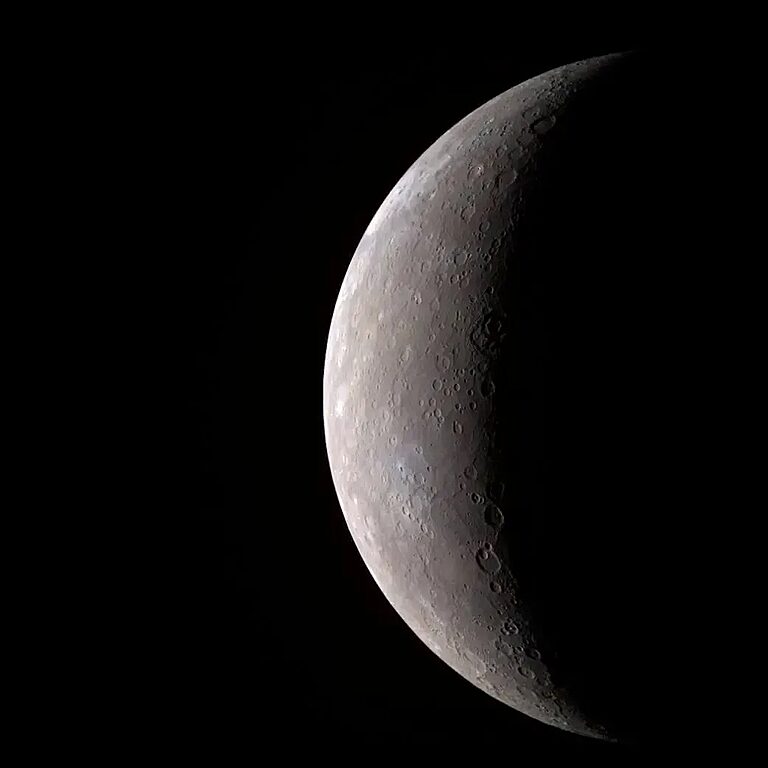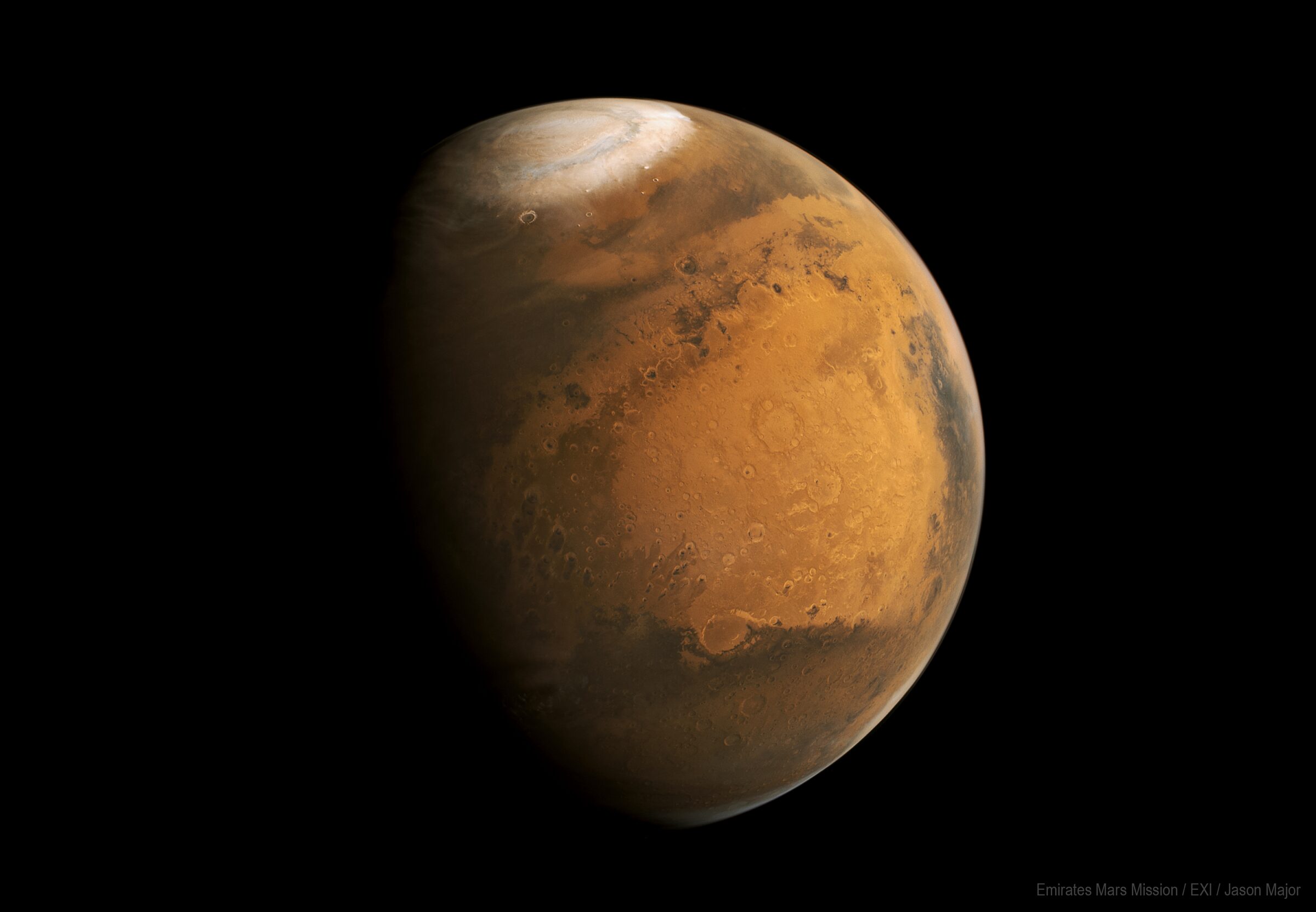Jason Davis • Jan 19, 2024
Why the true colors of the planets aren't what you think
Our eyes are remarkable organs. Millions of receptors called rods and cones line our retinas, converting light into signals that our brains use to see the world around us. The colors we perceive vary among individual humans, including people who have color vision deficiency. Quite literally, we don’t always see eye-to-eye with one another.
Just as color is subjective among humans, so too are the colors in the stunning images our robotic spacecraft send back to Earth. Cameras on our space probes act as proxies for our own eyes, but what they see isn’t necessarily what our eyes would see.
“Most of the cameras that we have on our spacecraft and space telescopes don't take color pictures,” said Heidi Hammel, vice president for science at the Association of Universities for Research in Astronomy, and vice president of The Planetary Society’s board of directors. “They take black and white pictures that are tuned to specific wavelengths of light.”
Tuning space cameras to specific wavelengths of light helps scientists answer important questions about the objects they study, such as what minerals are on the surface of an asteroid, or what elements are in a nebula. Because each space mission has its own unique science questions to answer, different spacecraft are equipped with cameras tuned to different wavelengths.
Human eyes can generally see light with wavelengths between 380 and 700 nanometers. This covers the entirety of our visual rainbow, from purple at 380 nanometers to red 700 nanometers.
Many space cameras use filters to capture images in narrow slices of our visual range. The Cassini spacecraft’s Wide Angle Camera, for instance, had filters that centered on 460 nanometers (blue light), 567 nanometers (green light), and 648 nanometers (red light). By combining images from all three filters, image processors could create approximate true-color images of Saturn and its moons that were close, but not exactly identical to how our eyes would see them.
“It's a combination of a little bit of art and science, but you can't just trust a picture that you see and think that's how it would look to your eyes,” Hammel said.
We can’t say for certain what the worlds of our Solar System look like to us until we see them with our own eyes from an orbiting spaceship, but we can dispel some standard myths. Here’s a tour of the planets that examines what we know about each world’s true colors.
What color is Mercury?
Mercury has a gray, slightly brownish appearance, somewhat similar to Earth’s Moon. Our best global pictures of the planet were made using images partially comprised of light from outside our visual range.
This image of Mercury comes from data captured by NASA’s MESSENGER spacecraft in 2008:

The picture was made using three images captured by filters with wavelengths of 430, 700, and 1000 nanometers. These do not correspond to our red, green, and blue color ranges; thus, the image is not quite what a human eye would see. Mariner 10, the only other spacecraft to visit Mercury, captured similar, close-but-not-quite-accurate views.
What color is Venus?
Cloud-covered Venus is bright white with yellow-beige hues. This image of Venus from Mariner 10 in 1974 estimates the true color of the planet fairly well, although it brings out more cloud detail than human eyes would see:

What we know for sure is that to human eyes Venus wouldn’t look like the images below from Japan’s Akatsuki probe. Akatsuki is equipped with an ultraviolet imager that sees details that human eyes can’t.

What color is Earth?
During the Apollo program, astronauts were able to photograph our planet from afar using handheld color cameras. Even color cameras can’t perfectly capture scenes as they appear to human eyes, but it’s a pretty close approximation. Here’s one stunning example:

Another fairly accurate view of Earth comes from NOAA’s DSCOVR spacecraft. DSCOVR captures multiple images of Earth per day from the L1 Lagrange point, located 1.5 million kilometers (930 million miles) from Earth towards the Sun. DSCOVR’s EPIC camera was designed to provide a close estimation of what human eyes might see:
What color is Mars?
We know Mars as the red planet, but its appearance is anything but uniform. The surface color varies from red to orange to brown across plains, dune fields, volcanoes, and ancient water channels. The planet has seasonal white polar caps which sometimes sublimate into visible clouds, and dust storms occasionally blanket the globe. Mars also changes its distance from the Earth and the Sun as both we and the red planet follow our prescribed orbits, and these distance changes also affect our perception of color.
This picture of Mars by the Hubble Space Telescope in 1999 was created using filters with wavelengths in red and green ranges. The peak blue wavelength, 410 nanometers, is actually a little more purple:

Compare that to this slightly oranger view of the same region, from the UAE’s Hope mission. Hope’s EXI camera can also capture images in red, green, and blue wavelengths:

This composite of images from Hubble shows the changing size of Mars as visible from Earth every few years. Note how the polar caps and atmosphere also change over time, which affect Mars’ color.

What color is Jupiter?
Jupiter is known for its brilliant cloud bands, swirls, and spots. Its impressive range of colors includes white, beige, yellow, brown, red, and orange.
Here’s a Hubble Space Telescope image of Jupiter from 2020:

The Hubble image captures Jupiter in red, green, and blue wavelengths (once again, this blue is a little more purple). While the resulting picture is gorgeous, most views of Jupiter from visiting spacecraft look a little more muted. Here’s an approximation of Jupiter’s true colors using data captured by NASA’s Voyager 1 spacecraft in 1979:

The Voyager 1 picture was created using 28 individual images captured through orange and violet filters, meaning the red, green, and blue versions of the image had to be carefully synthesized. Notice how the differences in cameras and filters make the Great Red Spot appear bright orange-red in the Hubble image, and more of an orange-brown in the Voyager 1 image.
Here’s an in-between color view of the Great Red Spot from NASA’s Juno spacecraft, which also captures images in red, green, and blue wavelengths:

What color is Saturn?
Stunning Saturn displays a wide range of colors. The planet itself typically appears as a pale, yellow-beige world with a variety of pastel yellow-brown cloud bands. Saturn’s rings range from grayscale to light brown, depending on the viewing angle and what spacecraft is taking the picture.
Here’s what the planet looked like through Hubble’s eyes in 2020:

In this image, captured in red, green, and blue (purple) wavelengths, Saturn’s cloud bands are quite pronounced and the rings appear nearly white in some regions. Compare that to this image captured by the Cassini spacecraft:

Here, Saturn appears more yellow with less prominent cloud patterns. The rings are also much browner. Although both images used light captured in the red, blue, and green ranges, the specific wavelengths within those ranges were different. This, along with other image processing nuances, created pictures with slightly different hues.
What color is Uranus?
Uranus is a pale, greenish-blue planet. Only the Voyager 2 spacecraft has ever seen Uranus up close, when it flew past the icy world in 1986:

Uranus is tilted on its side in relation to the rest of the planets. As it makes its 84-year trip around the Sun, different regions of the planet rotate into view. When Voyager 2 visited, the planet’s southern hemisphere was illuminated. In 2007, its equator faced the Sun. Now, its northern hemisphere is coming into view.
Scientists have long observed that Uranus appears bluer when its equator faces Earth, and greener when its poles face Earth. The planet’s blue hues come from methane in its atmosphere, which absorbs red and green light. There is less methane at the poles, which explains why the planet appears less blue when its northern and southern hemispheres face the Sun.
A new study led by Patrick Irwin, a planetary physicist from the University of Oxford, shows that this effect is enhanced by a reflective icy hood that forms over the poles when they are lit, giving the planet a more greenish hue.
Irwin and his colleagues took images from the Hubble Space Telescope and the European Southern Observatory’s Very Large Telescope and used them to rebalance the colors of Uranus and Neptune. Here is a set of rebalanced Uranus images, as seen by the Hubble Space Telescope:

What color is Neptune?
Distant Neptune is pale blue, with a hint of green. It looks similar to Uranus, with a slightly more bluish hue.
Neptune’s true colors have been a source of confusion ever since Voyager 2 visited the planet in 1989. Heidi Hammel, who was a member of the mission’s imaging team, said that scientists at the time were eager to obtain images that highlighted the planet’s cloud patterns.
“In 1989, we didn't have Photoshop. We didn't have tools that could easily color-process images,” she said. “When we wanted an image from Voyager, we would write on a piece of paper with pencil saying, ‘We want you to pull down image number X and image number Y and make a picture for us.’”
One of the most stunning images from the flyby revealed wispy white clouds and a mysterious dark spot moving across the face of the planet. The way the image was processed turned Neptune a shade of brilliant azure blue that was much darker and more saturated than the planet’s actual color. Although astronomers noted at the time that this was an “enhanced” view, the image spread quickly without that caveat, and became the public’s de facto picture of Neptune. The azure image is still in use today, even by NASA.
Image processors have tried to correct the planet’s color over the years, as in this Voyager 2 image of Uranus and Neptune:

It turns out that Neptune is probably even paler than in the above image. The Irwin study’s reprocessed version of the planet makes it almost as light as Uranus:

Another factor affecting our perception of Neptune’s color is its extreme distance from the Sun. In Earth-based telescopes, the faint sunlight out at the edge of the Solar System, and the fact that Neptune appears half the size of Uranus, combine to make Neptune seem to look a bit bluer than the Irwin comparison above.
The only way to know for sure what Neptune and other worlds look like would be to see them with our own eyes. In the meantime, we will continue to rely on our robotic ambassadors to show us close approximations. Because each person sees color slightly differently, space images give us our own personal view of the Cosmos to cherish and enjoy.
Let’s Go Beyond The Horizon
Every success in space exploration is the result of the community of space enthusiasts, like you, who believe it is important. You can help usher in the next great era of space exploration with your gift today.
Donate Today

 Explore Worlds
Explore Worlds Find Life
Find Life Defend Earth
Defend Earth


